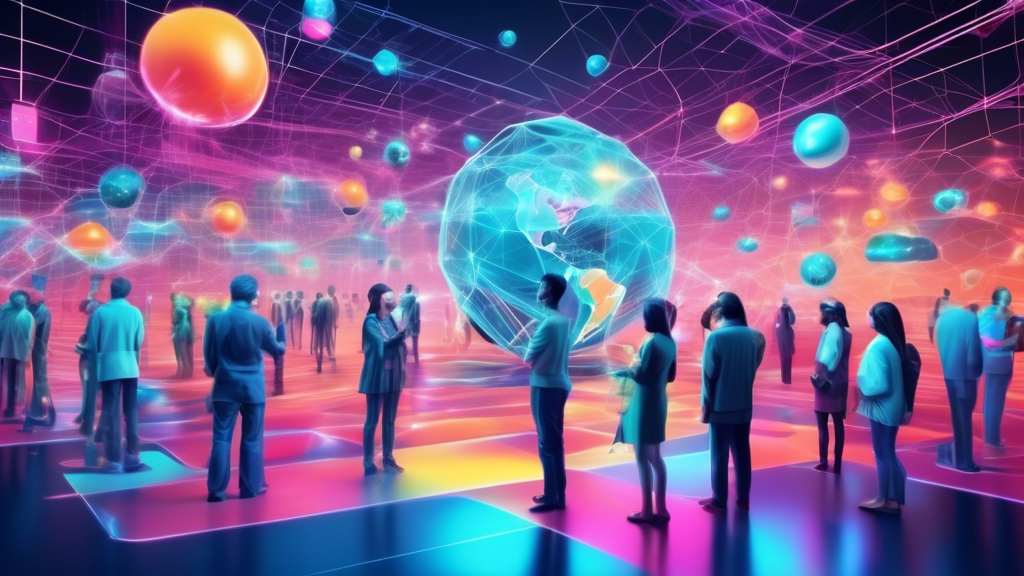Emerging Web Technologies: The Future of the Internet
The digital world is akin to a vast ocean, constantly churning with innovation and progress. Surfing this wave requires a look into the horizon – exploring the emerging web technologies that are shaping the future of the Internet. This article embarks on an exciting journey through the latest advancements in web development, offering a glimpse into what tomorrow’s online landscape might hold. Whether you’re a tech enthusiast, a developer, or simply curious, buckle up for a glimpse into the future that’s closer than it appears.
An Overview of Today’s Web Technologies
Before diving into the future, let’s anchor ourselves with a brief overview of today’s web technologies. Current web development primarily revolves around a core trio: HTML, CSS, and JavaScript. These languages form the backbone of the web, providing the structure, style, and functionality of web pages, respectively. On the server-side, technologies like Node.js, Python, PHP, and databases such as MySQL and MongoDB support the backend infrastructure. Meanwhile, frameworks and libraries like React, Angular, and Vue.js have streamlined front-end development, allowing for more dynamic and responsive web applications.
Imminent Technologies Shaping the Web’s Future
Looking forward, the horizon is brimming with innovations set to redefine our interaction with the web. Here’s a rundown of the emerging technologies leading the charge.
Artificial Intelligence (AI) and Machine Learning (ML)
AI and ML are not just buzzwords; they’re revolutionizing web development. From chatbots that improve customer service to algorithms that personalize user experiences, AI and ML are making websites smarter and more intuitive. Picture logging onto a shopping site that knows your tastes better than you do—thanks to AI, this is fast becoming a reality.
Progressive Web Applications (PWAs)
Blurring the lines between native apps and web pages, PWAs offer the best of both worlds. They’re accessible through browsers but can function offline, send push notifications, and load at lightning speeds. As internet connectivity becomes increasingly ubiquitous, expect PWAs to become the norm, offering user experiences that are seamless, engaging, and undiscriminating of device or network quality.
WebAssembly (Wasm)
Bridging the gap between web applications and native performance, WebAssembly allows code written in languages like C, C++, and Rust to run on the web at near-native speed. This means more powerful web applications, enhanced graphics, and video processing capabilities, unlocking new possibilities for web gaming, media, and more.
Blockchain Technology
Best known for underpinning cryptocurrencies, blockchain’s reach extends far beyond. Its principles of decentralization, security, and transparency are finding applications in enhancing user privacy, secure transactions, and even in the development of decentralized web (Web 3.0) platforms. The ‘trustless’ nature of blockchain empowers users and reduces reliance on intermediaries, marking a significant shift in how data and transactions are handled online.
The Intersection of Internet of Things (IoT) and the Web
IoT is weaving the web into the fabric of our everyday lives. From smart homes to wearables, IoT devices are increasingly web-enabled, fostering a seamlessly connected world. This integration is pushing developers to rethink web interfaces and interactions, focusing on real-time data exchanges, remote control, and automation. The result? A web that extends beyond screens, becoming an intrinsic part of our physical world.
Challenges and Opportunities
With great power comes great responsibility—yes, I’m looking at you Spider-Man fans, but the adage also rings true for web development. Enhancing user experience, ensuring privacy and security, and managing the sheer volume of data from IoT devices present both challenges and opportunities for developers. As the web evolves, it demands a balance between innovation and ethical considerations.
Conclusion: Embracing the Future
The web is on the brink of another evolution, propelled by advancements in AI, ML, PWAs, WebAssembly, blockchain, and IoT. These technologies are not just reshaping the internet; they’re redefining the very essence of web interaction and digital identity. However, the journey ahead is not solely about embracing new technologies; it’s also about addressing the ethical dilemmas they pose, ensuring the web remains an inclusive, secure, and enriching space for all.
As we stand on the precipice of this new digital era, it’s crucial for developers, businesses, and users alike to stay informed and adaptable. The future of the Internet is a collaborative narrative we’re all writing—one that promises to be as exciting as it is unpredictable.
Call to Action
Whether you’re looking to adapt your business to the future of the web, develop cutting-edge web applications, or simply stay ahead in the digital curve, your journey starts here. Visit starmetaversegeorgia.com for all your web development needs. Together, let’s harness the potential of emerging web technologies and chart a course towards an innovative and inclusive future online.

Comments are closed